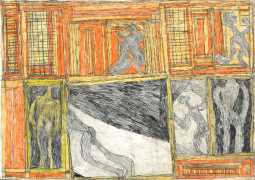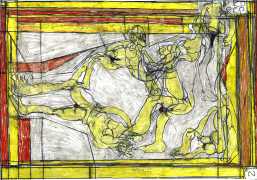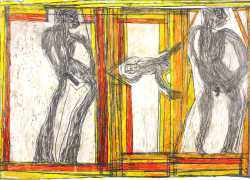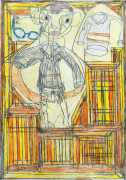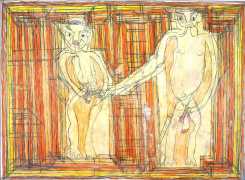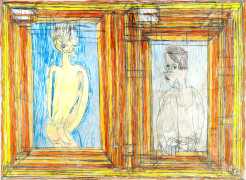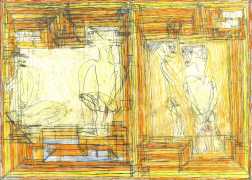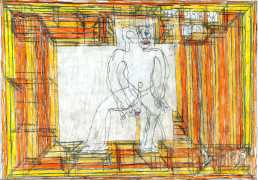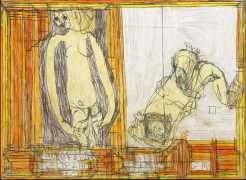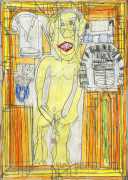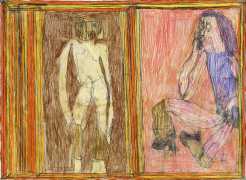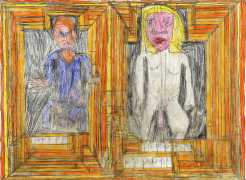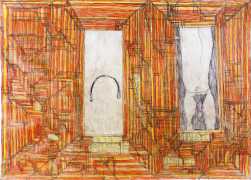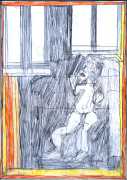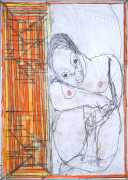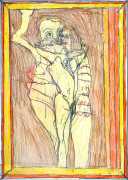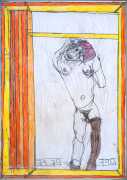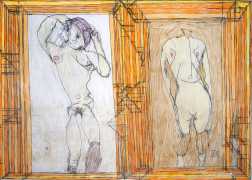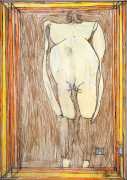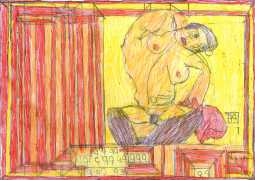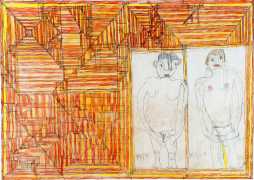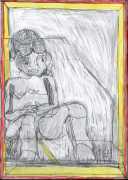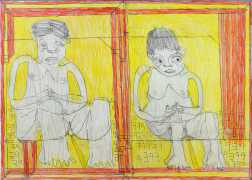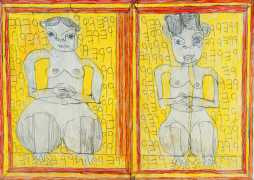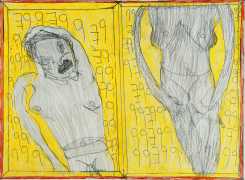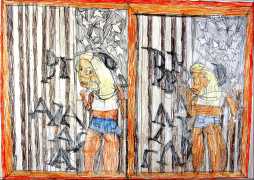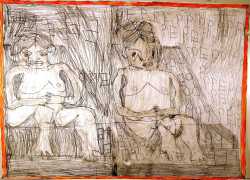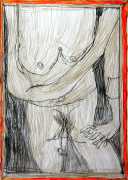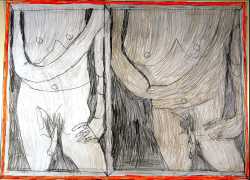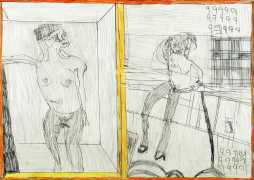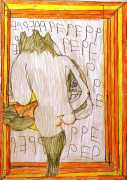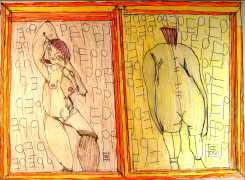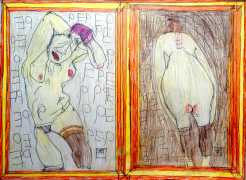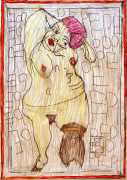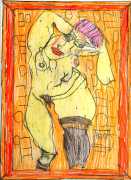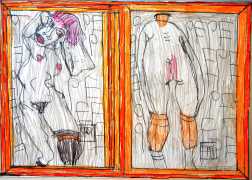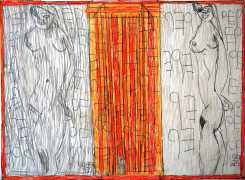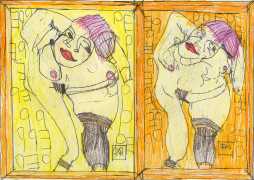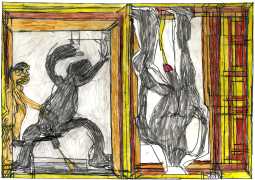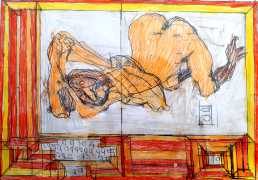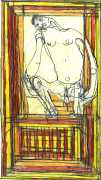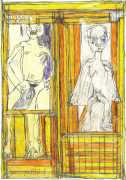Josef Hofer has undoubtedly lived a challenging life, but to a large extent it is due to his impairments, rather than in spite of them, that he now occupies an important place in the art world. His art expresses a way of seeing unique to those removed from a more conventional lifestyle. In his works the figures are bordered, separated, isolated in a world of intricate delineations. What lies within is just as important as what lies without – Hofer’s ‘frames’ allow the margins of each work to pull the spectator’s focus outward from the centre, emphasising that in many ways we are as much an outsider in Hofer’s world as he is in ours.
An important aspect of Hofer’s art is that nearly all his figures are naked and facing directly towards the viewer. To what extent this is acknowledging or emphasising the raw sexuality of the naked human being is as much up to the viewer as to the interpretation of the artist’s internal creative process. Whether or not it makes Hofer’s art intrinsically erotic is yet another fascinating question, to which there is almost certainly no simple answer.
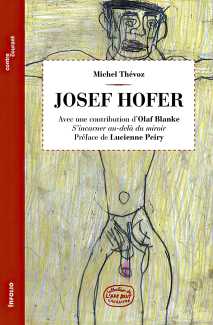 In 2013 the Collection de l’Art Brut/Infolio in Lausanne published a study of Hofer’s work, with 29 representative illustrations and an introduction by Lucienne Peiry. The book, titled simply Josef Hofer, includes a piece by art historian Michel Thévoz exploring the work of Hofer and providing a wide-ranging analysis, considering many of the characteristics of his ‘art brut’ works. Thévoz looks at various aspects of the history of the mirror, developing concepts intrinsically linked with it – image and reflection, illusion and reality, identity and otherness. He examines the importance of the mirror in Hofer’s work, and concludes that ‘in seeking to reach the object of his desire, Hofer experiences the mirror as a kind of birth’. Thévoz’s essay is followed by the perspective of neuroscientist Olaf Blanke, who specialises in bodily self-perception and self-awareness. Blanke, who views the mirror as an way to selfd-knowledge, argues that ‘it was perhaps by looking at himself from the outside that Hofer began to draw himself from the inside’.
In 2013 the Collection de l’Art Brut/Infolio in Lausanne published a study of Hofer’s work, with 29 representative illustrations and an introduction by Lucienne Peiry. The book, titled simply Josef Hofer, includes a piece by art historian Michel Thévoz exploring the work of Hofer and providing a wide-ranging analysis, considering many of the characteristics of his ‘art brut’ works. Thévoz looks at various aspects of the history of the mirror, developing concepts intrinsically linked with it – image and reflection, illusion and reality, identity and otherness. He examines the importance of the mirror in Hofer’s work, and concludes that ‘in seeking to reach the object of his desire, Hofer experiences the mirror as a kind of birth’. Thévoz’s essay is followed by the perspective of neuroscientist Olaf Blanke, who specialises in bodily self-perception and self-awareness. Blanke, who views the mirror as an way to selfd-knowledge, argues that ‘it was perhaps by looking at himself from the outside that Hofer began to draw himself from the inside’.
Often signed Pepi, Hofer’s works are essentially observations and narrations of his own life. His drawings can be seen as a kind of mirror, reflecting both Hofer and the spectator while also expressing the hypnotic innocence of art. As Michel Thévoz writes, ‘Josef Hofer is in a state of grace – an erotic, untrammelled form of grace where the body strives to break free from the prison of the frame.’


